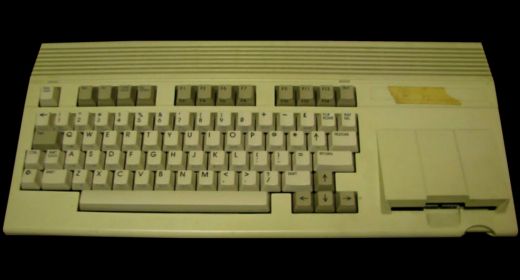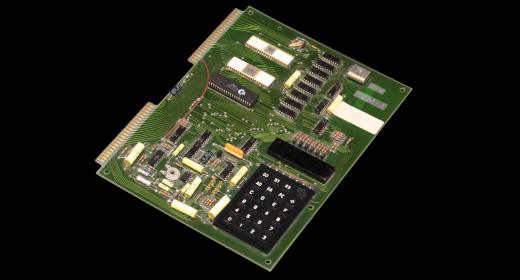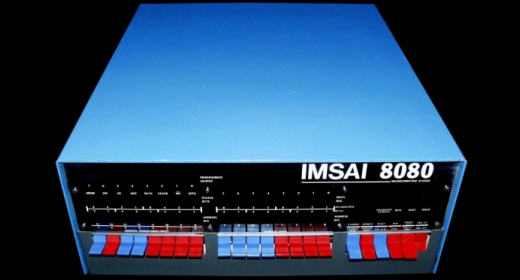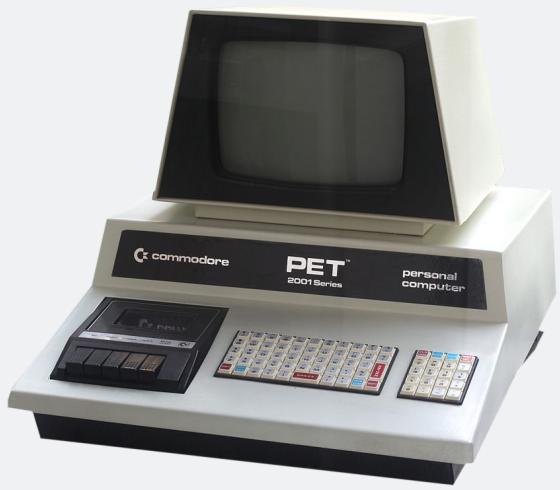
The Commodore PET was Commodore’s first fully featured computer for the home computer market. Introduced to the world in 1977 the Commodore PET soon became a best seller in the North American educational markets and spawned a whole host of products based on its 8-bit microprocessor. This firmly managed to create the first inroads for Commodore into the home and education spheres. This would later lead to Commodore producing some of the most successful home based systems in the early 1980’s with the Commodore 64 and in the early 1990’s with the Amiga 500 personal computer systems.
Back in the 1970’s Commodore was a manufacturer of calculators based upon Texas Instruments chips; however when Texas Instruments decided to raise the wholesale price of these chips Commodore found that it was no longer cost effective. This lead Commodore to investigate producing their own chip set, they made contact with MOS Technology who were in the early stages of manufacturing their 6502 microprocessor. After much discussion MOS Technology engineers managed to convince the owners of Commodore that the Calculator market was finished and that the brave new frontier was in home based computers.
Jack Tramiel the owner of Commodore insisted that the team members at MOS their newly acquired semiconductor company start work on creating a computer in time for the 1977 Consumer Electronics show. With only a six month window to work within the team managed to produce the first all in one home computer, the Commodore PET or if you prefer the Personal Electronic Transactor, what a beautiful name. The first of the PET range was the PET 2001 with a 6502 processor at its core it controlled the screen, keyboard, cassette tape storage and any attached peripherals that used anyone of the PET’s available expansion ports.
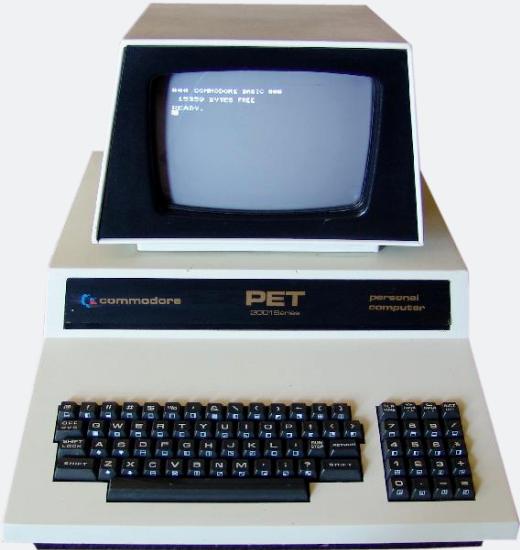
The PET 2001 came in a couple of different outfits initially; there was a choice of having either 4KB or 8KB of 8-bit RAM however the 4KB version was eventually scrapped. The single board computer utilized a built in monochrome monitor that could display 40 characters over 25 lines. The PET 2001 also had an inbuilt Datassette positioned at the front of the machine providing data storage facilities, it could transfer data at a rate of 1500 baud to tape. Also at the front of the machine was a small keyboard on the right hand side that wasn’t very big due to the Datasette taking up a large portion of the left hand area.
At launch the PET 2001 enjoyed a little bit of success however there were a number of complaints about the systems less than convenient keyboard. Considering the size of the actual machine the keyboard was ridiculously small, and clearly not aimed at anyone that would have to endure typing for any serious length of time. This issue was resolved when Commodore released an updated version with the PET 2001-N and PET 2001-B versions. These allowed for a larger keyboard to dominate the front area of the machine with the Datasette relegated from the casing to being an external only peripheral.
Commodore’s new PET-N range came with a newer version of the previous models motherboard and shifted focus from having static RAM only to using dynamic RAM instead. This resulted in various different models being made available based on the amount of dynamic RAM they contained. At the lower end was the 8KB version followed by 16KB and 32KB also, sales for the new machines were so good that Commodore expand the sales territory of the PET to include Europe also.
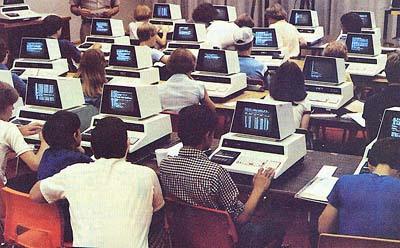
With sales of the Commodore PET 2001 continuing to stay strong the last version of the PET in its classic form was the PET 4000 series. The PET 4000 was in essence a glorified version of later PET 2000 series with a larger monitor and a newer version of the BASIC programming language. The PET 4000 built up a stronghold as a functional machine for school use, as its tough external metal construction stood up well to the rough classroom use. Another reason for its relatively wide success in the classroom was due to its ports that allowed for local area networks to be easily setup and allow shared access of printers and disk drives.
There were two final systems released under the PET moniker, the first was the CBM 8000 and the last was the SP9000 known also as the SuperPET. The CBM 8000 shipped with a newer display chip that rendered it incompatible with the programs already established for the previous PET machines and as such the system didn’t have much commercial success. The SB9000 was based on the same framework as the CBM8000 but had an additional CPU, more RAM and included more programming languages. The SuperPET system was mainly used in universities as a smart terminal for teaching students how to program.
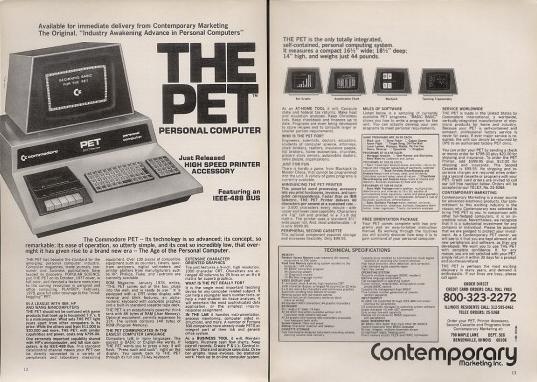
The PET’s graphics capabilities were very limited so Commodore released a High resolution graphics boards to allow it to compete with the Apple II and Commodore’s own VIC-20. Some people at the time assumed that the PET range would find favor with only casual computer users, but hobbyists noticed the huge potential due to the options and flexibility built into the PET. From the way it handles strings and machine language access to the second cassette interface made the system suitable for expansion and enhancement.
Overall the PET platform provided entry for many to owning a home computer due to its low entry price point. Schools and universities also embraced the system due to its easy ability to program using BASIC. For many school children of today the functionality of the PET computers would not be understood for its significance in what home computers of that era established over 30 years ago. The y allowed for accessibility to hardware that previously would have always been out of the reach of everyday school children or undergraduates. We now take computers for granted and are underwhelmed with quite how powerful these machines actually are, and it’s only now that we can truly appreciate just how far things in the computer world have come along.
